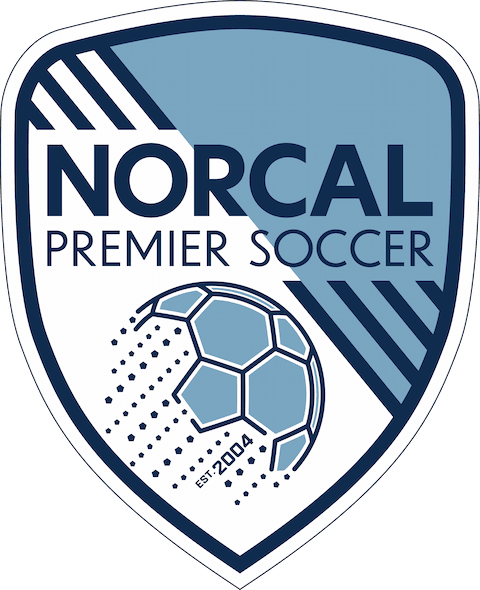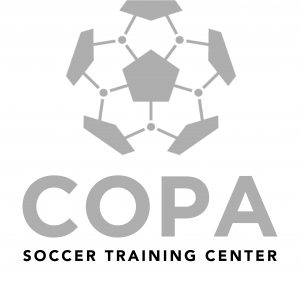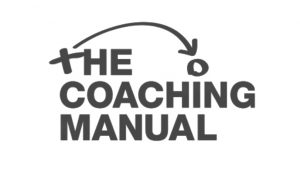Q&A: Soccer Without Borders Director Ben Gucciardi

Note: NorCal Premier Soccer regularly sits down with an influential figure in the youth soccer landscape to pick their brain about a variety of different topics that are relevant in the current soccer environment in the United States. For this edition we spoke with Ben Gucciardi. A former player at Lehigh University, Gucciardi founded and currently serves as the Oakland Director of Soccer Without Borders, a Bay Area non-profit that helps refugees enjoy the beautiful game at the youth level.
NorCal: How did you fall in love with soccer?
Gucciardi: When I was really little, I played multiple sports and I had a chance to go to Mexico with one of the soccer teams I was on. The coach of the team was from Mexico and had strong connections there so he brought us down there so we got to play with a bunch of the youth clubs of professional teams. Just getting to see what soccer was like in that environment, just what it meant to the communities down there, to see the facilities and the high level of play, that was the first time it became my favorite sport. I was probably 11 or 12 at the time and I think pretty much after that it just became my primary point of focus, something I wanted to do all the time. Though high school and college, soccer was really my biggest motivator, I wanted to be playing all the time. I think early on it was just really understanding how much the game meant to other people and what a central part of community life it was.
NorCal: You played at the college level, was that always your goal growing up?
Gucciardi: I grew up in San Francisco in the city and at that time there wasn’t a lot of high quality soccer in the city so I needed to go to the North Bay or the East Bay a lot to play. I did ODP and that was definitely a big experience for me, but in the back of my mind I had the goal of wanting to play at the highest level I could and was motivated by that.
NorCal: You’re still located in the Bay Area. How have you seen youth soccer in the area change since you were a player?
Gucciardi: I’m not as tuned into that as you might think I would be. There are definitely a lot more clubs and a lot more opportunities. The game has grown, I’m aware of all of those things, but I don’t know the specifics of which clubs are strong and which aren’t as strong. When I was young I could tell you which were the good clubs, but now I’m not sure. From my perspective, it seems like there’s a lot of overlapping groups competing with each other to be the best system which I think undermines the efficacy of some of that. Obviously MLS has also grown, which is a big factor, but there’s also multiple different leagues and development pathways and it seems like there’s maybe so much going on that it’s hard to understand what the best way of actually supporting young people who have that objective of playing at a high level is. Or maybe there’s multiple pathways, but it seems to be a much more crowded space than when I was growing up, which is about the level of detail that I have.
NorCal: So you’re more in tune with the game in the sense of using it as a way of social change then?
Gucciardi: Yes, that’s definitely much more of where I connect to soccer at this point. I think, specifically, the thing that is my favorite part about it now is the ways it connects you with people who it would otherwise be very difficult to connect with. It builds bridges in a way that very few other things can and it does that in an authentic way. I think that’s really why I stayed connected with soccer. I don’t follow lots of teams and I don’t watch soccer all the time. I mean, I still love to watch the World Cup, I still love to watch the games when I can, but I connect to soccer much more as a tool at this point. And I think part of that is that the game has become so expensive and out of reach for so many people. That makes me turn away from some of the club soccer world a little bit, because it’s not accessible for so many people.
NorCal: Regarding that issue, how do you think we can combat our challenges with accessibility?
Gucciardi: It’s a good question and I think there just need to be more alternatives, especially in underserved communities. One big issue is definitely facilities and space and that’s a real cost. I understand that there are real costs associated with youth soccer: referees, fields, these things cost money. But I think if we look at recreation from an educational lens and not see it as something extra, but as a more fundamental part of what is beneficial for kids growing up, then we get closer to the solution. I think if we took that perspective there are resources that aren’t being utilized in the communities Soccer Without Borders serves…there are a lot of fields that aren’t accessible, but if there was a local government that was behind getting kids out, and felt that was important, then park and rec departments and schools could be brought into the conversation, and soccer could be seen more as a public health initiative, as a way to bring communities together and provide a positive space for youth. I think there’s a ton of missed potential, and I think part of that is also rethinking what a game has to be. Does it have to be 11 v 11? If you have a park in the neighborhood and it’s 7 v 7 size, then let’s make a 7 v 7 league. I would say that the first step would be to have more people understanding the benefit of soccer and sports in general for youth and then actually investing in it with resources, which doesn’t always mean money. It actually doesn’t take that much. You can get people out to a park and create good jobs for people from those communities to be refs — it doesn’t take that many resources and can make a huge difference to young people. It’s just really a matter of prioritizing that. Right now I think most of the major forces driving youth soccer are for profit entities that have a money-making objective and there need to be more alternatives that are about the public good and education and youth development that get resources to those groups because increasingly there are organizations like Soccer Without Borders and America Scores and other groups that do really good work but are so much smaller in terms of the money and the resources and the people that it’s tough to really make a dent in the system. One other thing that I think is really also tricky about the accessibility of the current system, just from my perspective, is player passes and registration and who can and can’t play. It’s actually a pretty prohibitive thing for a lot of kids, to actually have somebody who can drive that process. There are so many other systems that I can imagine that would be more accessible. Just rethinking how players sign up and are able to show up and play or not play, I think there needs to be an alternative system there. For our kids it’s really tricky. When a refugee is first resettled here, they might have a passport from Afghanistan and it’s in Farsi and that’s their main form of ID and that might not be recognized by the youth soccer leagues so they can’t get a player pass, or kids might have just come from Honduras and they didn’t necessarily have all their IDs from there because they had to leave really quickly and they don’t necessarily have documentation. We have other families that, if there wasn’t one of our coaches telling them which documents to bring at which time…it takes a ton of work, but the family wouldn’t have even been aware of what that process is like. They’re probably just thinking that they can just show up to the game and play, which to me makes intuitive sense, but is actually a much more complicated system. Of course you have to have a way of figuring out age and liability, I understand that those things are real, but I just think there’s a way that we can do that at a much lower barrier that wouldn’t require families who don’t have access to resources and social capital and language skills and all these other things, which may seem like a small minority, but is actually a huge group of people who don’t get to participate in the traditional youth soccer system without advocates and without people who are doing a lot of work for them. I think that we need fundamental restructuring of both the priorities that we have around youth soccer, where resources are coming from, and where resources are going to, and then also some logistical changes that would be a lot more inclusive, that would be about how many kids we can get playing as opposed to how do we ensure that everybody’s properly credentialed. I think that those are really different questions. Right now, the way that the system is set up is so credential-focused that a lot of kids are left out. The primary driving question is not “how many kids can we get playing?” it’s “how do we make sure that the i’s are dotted and the t’s are crossed?” It just makes for a very different environment.
NorCal: You mentioned your program, Soccer Without Borders. Tell us about it.
Gucciardi: SWB has grown to be a global organization, and we’ve been working in Oakland since 2006 to provide soccer and educational programming for refugee and immigrant youth who came to the U.S. seeking safety and opportunity. Our mission is to help them achieve growth, inclusion, and personal success and we usie soccer as a way to build community, as a way for them to meet new friends, connect with mentors in their coaches, and to establish a sense of familiarity. A lot of the kids have experience with soccer in their home countries. At a time where everything else is changing for them, the game really provides that consistency in their lives. We practice a couple days a week and then have a game and also have sessions where we focus on academic support. We provide students with equipment, transportation, we get their player passes, which takes a ton of work, and we have a partnership with the Albany-Berkeley Soccer Club that we’re able to have our teams play through ABSC in some NorCal leagues. We also play in the Jack London leagues, and then for part of the year we actually run our own leagues with the different Soccer Without Borders teams. We have about 16 teams now in Oakland and we’re focusing on middle school and high school ages with both boys programming and girls programming. We’re sort of looking at different ways in getting kids playing in places that are skill-level appropriate. And then we use their interest in the game to create these relationships. Part of being in the program is that we’re aware of what their grades are, but we’re not trying to be punitive — you don’t have to have a 2.0 to play. We see ourselves more as an intervention for some of the kids who are maybe struggling to stay in school or don’t like school, maybe we can be the bridge that helps connect them to some adults who can support them to do their homework because they’re not understanding it. Or, most often, they have to go to work so they can’t go to school every day and so how can we work with them to maybe make a budget that can help them work less and still have the time to do the things they need to do like go to school for two more days a week. Sometimes you just need somebody who’s going to be able to help you to make those decisions so a coach is really well-suited, our coordinators are all trained to look holistically at what’s going on with each player’s situation. We want to help them to become better players, but really it’s about helping them navigate their own challenging situation and help them achieve the goals they set for themselves. We have a big emphasis on high school graduation and then supporting post high school plans, whether that’s community college, college, or career opportunities. We focus on that as a longer term goal, and then support students to complete their grade level each year. Those are some of the ways that we calculate our success, by looking at graduation rates of kids who are in our program versus kids who aren’t in our program, but are from the same demographic. We find, for the last 10 years, our graduation rate is between 90 to 95 percent each year and the Oakland School District average for students in our demographic is between 55 to 65 percent. It’s a pretty big difference in having that support of a team community and that caring mentor. Those things matter. Getting back to where we started the conversation, that’s why it matters that more young people can play because it’s not just about playing, it’s about these relationships where you have a mentor, you have teammates who are helping you make good choices and there’s a positive environment where you can feel a sense of belonging that’s based in mutual respect as opposed to a lot of the high school students in the neighborhood where we live where there’s a lot of gang activity, there’s a lot of violence, and our kids are constantly being exposed to that. Which of these directions are you going to go? It’s a thin line for a lot of our students, but we also have seen that if you have somebody encouraging you in one direction, that does matter. Not that every single student is going to be successful, or we’re going to win every single one of those close calls, but we do win them often.
NorCal: What have been the challenges of continuing to run this program during COVID-19?
Gucciardi: With the pandemic we were not able to meet in person with the students in the Spring. That whole routine was interrupted and we were able to do Zoom practices with the students where we got together and did some workouts and ball work, but a lot of it was just checking in with each other and doing something fun, having a chance to socialize. The challenges with that were we definitely became much more aware of the digital divide and how many families didn’t have access to internet consistently. Or what we found a lot was people might have internet, but there was only one device with five kids in the family so maybe five different schools are trying to get the kids to do schoolwork and there’s one device. Maybe different people are trying to reach out in different ways, so it was just kind of understanding the realities of connectivity and ability to access programming. I think also we just saw that there’s so much work that the teachers do to help the students to make schoolwork accessible to them, but they were not able to get that in-person support from the teachers to understand because a lot are learning English and Google Classrooms is tricky anyway, but if it’s not in your first language…We became really aware of how isolated students were academically and what an uphill battle that was going to be for them to continue to do any kind of schoolwork. We’ve been able to stay in touch with almost all of the students, there were a few that we weren’t able to communicate with, but those who were able to joined Zoom practices and others we’ve continued texting. We did a lot of drop offs with some emergency funds in some cases or just helped families with food and just tried to make sure that there was an outlet. When the summer came, we were able to do small group practices in pods with about eight players so we were able to do more in-person work in the summer, but I don’t want to sugarcoat it. It’s a really hard time for our players and our families. There’s a lot of families who have lost work, there are a lot of families who are relying on food support from different publicly available stuff. There’s a real sense of isolation from a lot of players, there’s boredom. People are going to bed late and waking up late. It’s a very hard time for a community of a lot of people in very crowded houses, it might be six people in a one bedroom apartment. We’ve been able to stay connected and do our best during this time, but it’s also been a real uphill battle.
NorCal: What’s the best way for people who want to support Soccer Without Borders?
Gucciardi: We have a website. We are always looking for volunteers. If there are coaches or people who would be interested in volunteering in person (we would love that). We also provide equipment for all of our players and we especially need bigger sized cleats, like size six and up. And we need size five balls, that’s always a real challenge. Generally speaking, shorts and shin guards for older kids are hard to find. We tend to get a lot of stuff for younger kids, but for older kids, we go through that stuff so quickly, there’s just so many students who need that. That’s a great way to get involved and help out if people are able to.
NorCal: Anything else you’d like to add?
Gucciardi: One thing that’s important to highlight is that we work specifically with girls. I think a lot of programs that are developing programs for underserved populations are often boys focused. One thing that we’ve been able to do pretty well has been to develop girls programming for this community. In Oakland, there was just a Title IX lawsuit between the district and the league because there’s such discrepancy in levels of girls participation and I think that’s something that we’ve done pretty well by prioritizing having female coaches and really making it about more than just soccer — also emphasizing the social and academic components of the program and doing special teambuilding trips. A lot of times girls who haven’t played the game, soccer might not be the biggest appeal, but how can you make it about something more than that? Soccer can be a strong component of it, but it’s also about supporting them in these other ways. That’s just an important thing to be considering when you look at who has access and opportunities to the benefit of participating. A lot of times we don’t add a gender lens to that socio-economic lens as well, but I think that’s a pretty important thing to do. I also just want to thank NorCal. I know that NorCal folks support what we’re doing and have tried to really advocate for us. I think that’s the interesting part about this, I’ve yet to meet someone who is really happy with the “pay to play” model. I think everyone is thinking critically about it, and yet it persists. But I definitely know that we’ve always felt a lot of support and appreciation from the soccer community. Our work can’t happen without a lot of different agencies and partnerships. We’re kind of an intermediary. We get school district funding and county funding and health services funding, we partner with schools and soccer clubs, so we’re kind of an intermediary, but we really couldn’t do it all without all these other groups and the infrastructure that NorCal provides. I just want to extend my gratitude to NorCal Club Services Coordinator Nick Lusson and everyone else at NorCal because there’s a lot of good people helping us.












